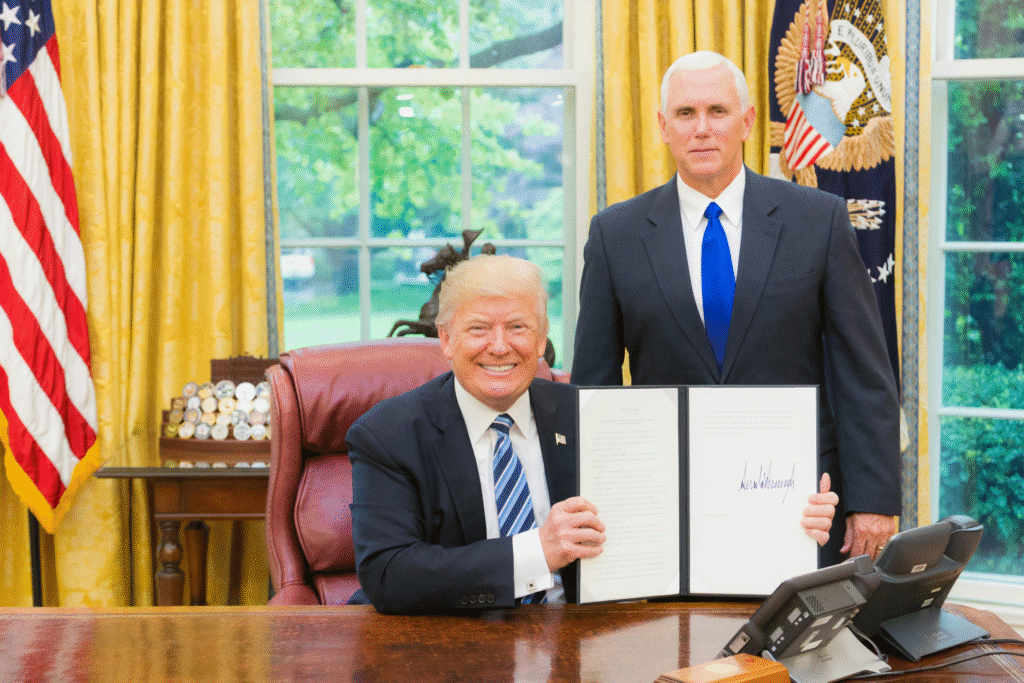It looks like the long-awaited semiconductor tariffs in the US may not happen as soon as many people thought. Senior officials are quietly hinting that the implementation may be pushed back. President Donald Trump called the initiative a key part of his economic strategy, and it was expected to have a big impact. Now, people who are aware with internal conversations say that the administration is being much more careful about the political and economic effects than it was before. The change has stunned those in the business who were ready to act right away. It has also shown how hard it is for Washington to change the global semiconductor market without upsetting its fragile relationship with Beijing.
In the last few days, U.S. authorities have had a number of private talks with people in government and the tech industry. People who were there say that the message has become clearer: the tariffs may not go into effect as quickly as promised. These people, who were told about continuing talks, say that the administration is looking at the risks to the economy, the limits on diplomacy, and the bigger strategic picture. Another person who is watching the matter said that Washington is taking a more cautious approach, being aware of how it could affect China. No one had publicly acknowledged any of these silent signs until today.
The semiconductor tariffs were seen as one of the president’s most forceful measures for months. They were both a signal of economic nationalism and a way to boost domestic production. The government had previously suggested putting taxes on imported chips that were close to 100 percent, but only for companies who were already making chips in the US or promised to do so. That position has caused both excitement and worry, especially among companies that depend on global supply lines. Officials had told several people directly that the policy announcement was coming soon. The tone of those talks has only just started to change.

People who were there or heard about these talks say that Trump advisers are purposely making things go longer. Their main goal right now is to avoid a significant break with Beijing, especially because the trade relationship is strained but stable. Officials fear that a sudden spike in chip tariffs could provoke retaliation from China, leading to disruptions in critical sectors, especially rare earth minerals and other materials essential for American manufacturing and national security industries. Washington still remembers past trade fights, and numerous insiders say the administration wants to avoid starting a new cycle of increasing actions.
The White House also seems to know that no decision is final until the president personally authorizes it. Sources say that the administration could still go forward quickly. As one person who knows about the internal debate said, “triple-digit tariffs are still possible at any time.” But the once-clear expectation of an immediate release has faded, and now there is a more flexible timeframe that is based on economic data, the state of diplomacy, and feedback from domestic industry. Because the policy talks are still going on, all four people who spoke about it asked to remain anonymous.
In August, President Trump said that the US will go forward with a tariff of about 100% on chip imports. He promised that companies that invested in making things in the US would be safe. His message was both an attempt to speed up reshoring and a desire to change the way chips are supplied around the world. In private, authorities stressed that message and said that the rollout was only a few weeks away. However, that planned schedule has changed, which raises additional issues about how the administration plans to balance its economic goals with the realities of the world.
The White House firmly denied that its attitude had changed at all when asked to comment on these claims. Kush Desai, the spokesman, said, “The Trump Administration is still committed to using every lever of executive power to bring back the manufacturing that is essential to our national and economic security.” Reports from unidentified sources who say otherwise are just fake news. His comment brought up a common topic in the present administration: pushing back against unofficial stories and refusing to admit that things are unsettled within the government. A Commerce Department official said something similar, saying, “There is no change in department policy regarding semiconductor 232 tariffs.” But neither announcement made it clear when the tariffs would actually be finalized, so people who follow the business had to read between the lines.
The convergence of economic policy and diplomatic strategy makes this period especially complicated. Semiconductors are no longer merely a commercial problem; they are also very important for national security, technological leadership, and the bigger competition between the US and China. Any change in how Washington does things might change global markets, affect investment decisions, and change relationships. As American corporations develop new factories and look for incentives through current programs, it is becoming more and more crucial to know what the tariff policy is. Without it, businesses could be afraid to grow because they are worried about sudden and unpredictable changes in trading conditions.
People who work in the industry are used to the unpredictability, but it is still annoying. It’s well known that semiconductor supply chains are very complicated and traverse several nations. Even a tiny change to a policy can have big effects on markets, changing prices, manufacturing schedules, and relationships across countries. When politicians show doubt, industry leaders typically take it as a sign that the risks to the economy may be larger than they first thought. Some people think it’s a smart move, but others think it shows that the administration’s economic team is becoming more tense.
China’s public response has been calm. Officials in Beijing have kept appealing for stability and “mutually beneficial cooperation” in the chip industry. This term shows both diplomatic prudence and strategic positioning. China knows that a sudden rise in U.S. tariffs may hurt not only its own manufacturing but also the global markets in which it plays a big role. It shows that it wants to avoid conflict by making appeals, even while it is pushing hard to create a self-sufficient semiconductor environment.
These changes show how hard it is to recreate local sectors in a world that is becoming more connected. Reshoring is not an easy thing to do. It needs a mix of rewards, safety measures, and plans for the long term. Policymakers need to think about the long-term effects on alliances, supply chains, and global stability as well as the short-term political rewards. The uncertainty presently evident in Washington may signify a developing comprehension of those facts.











